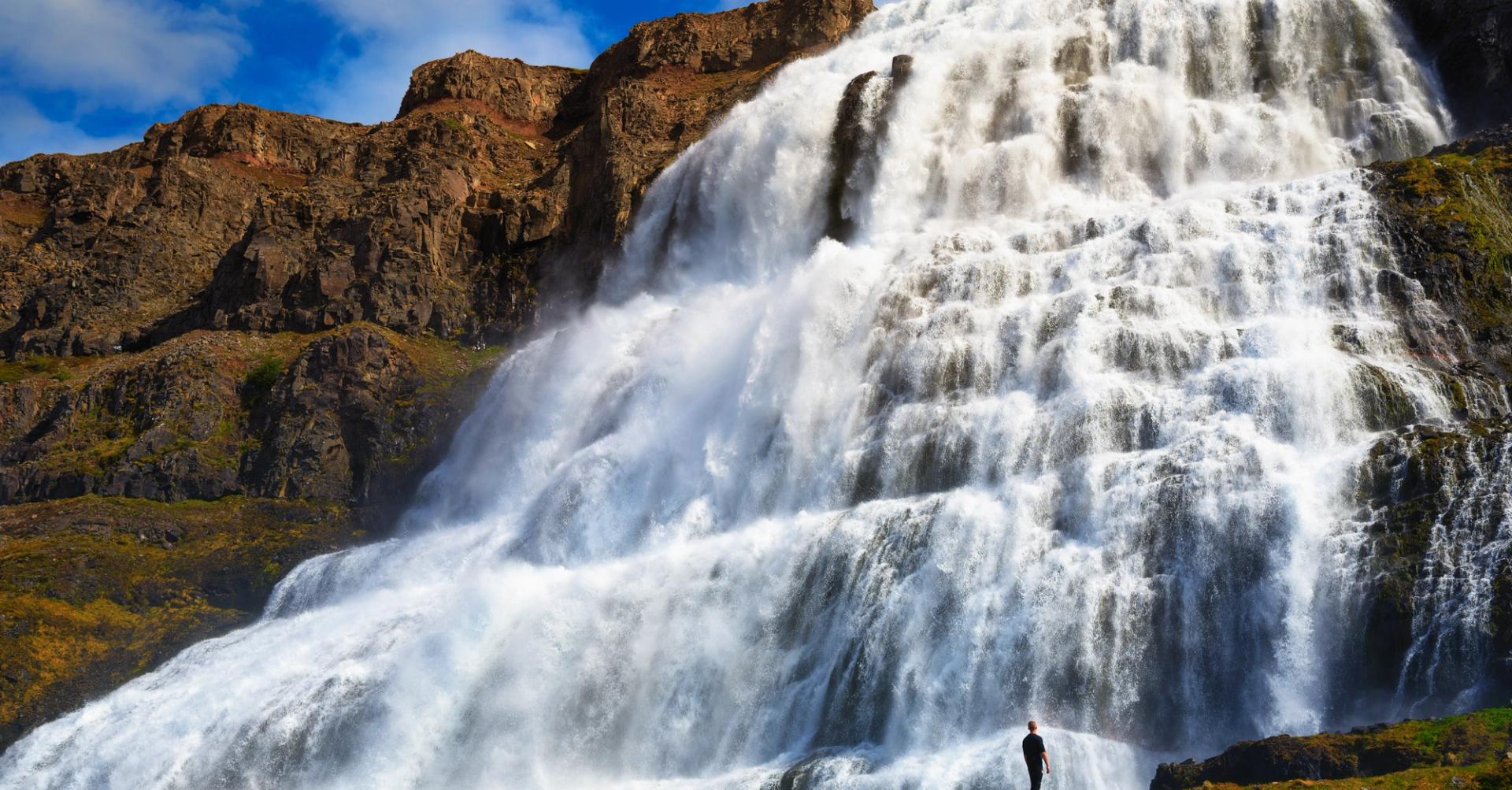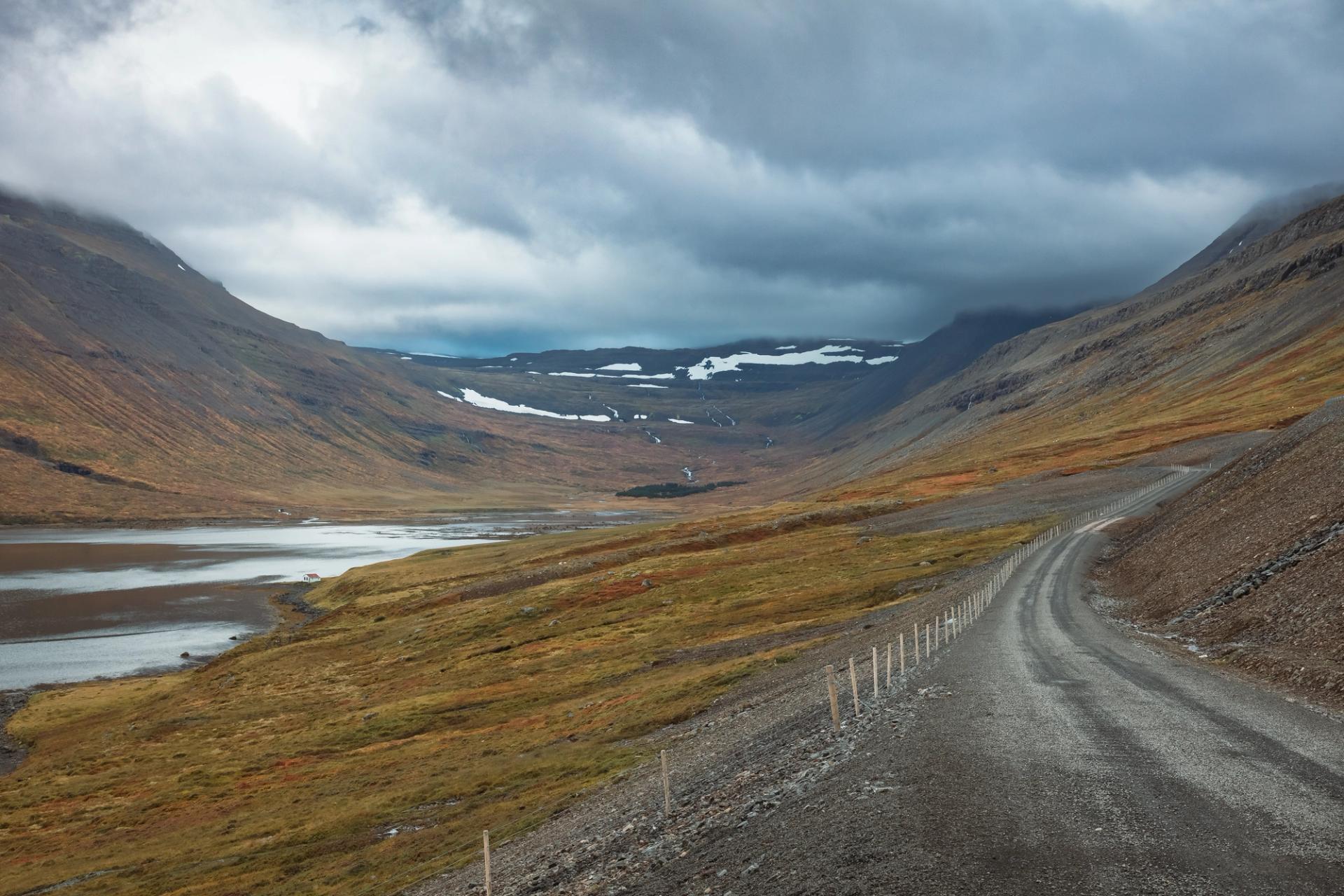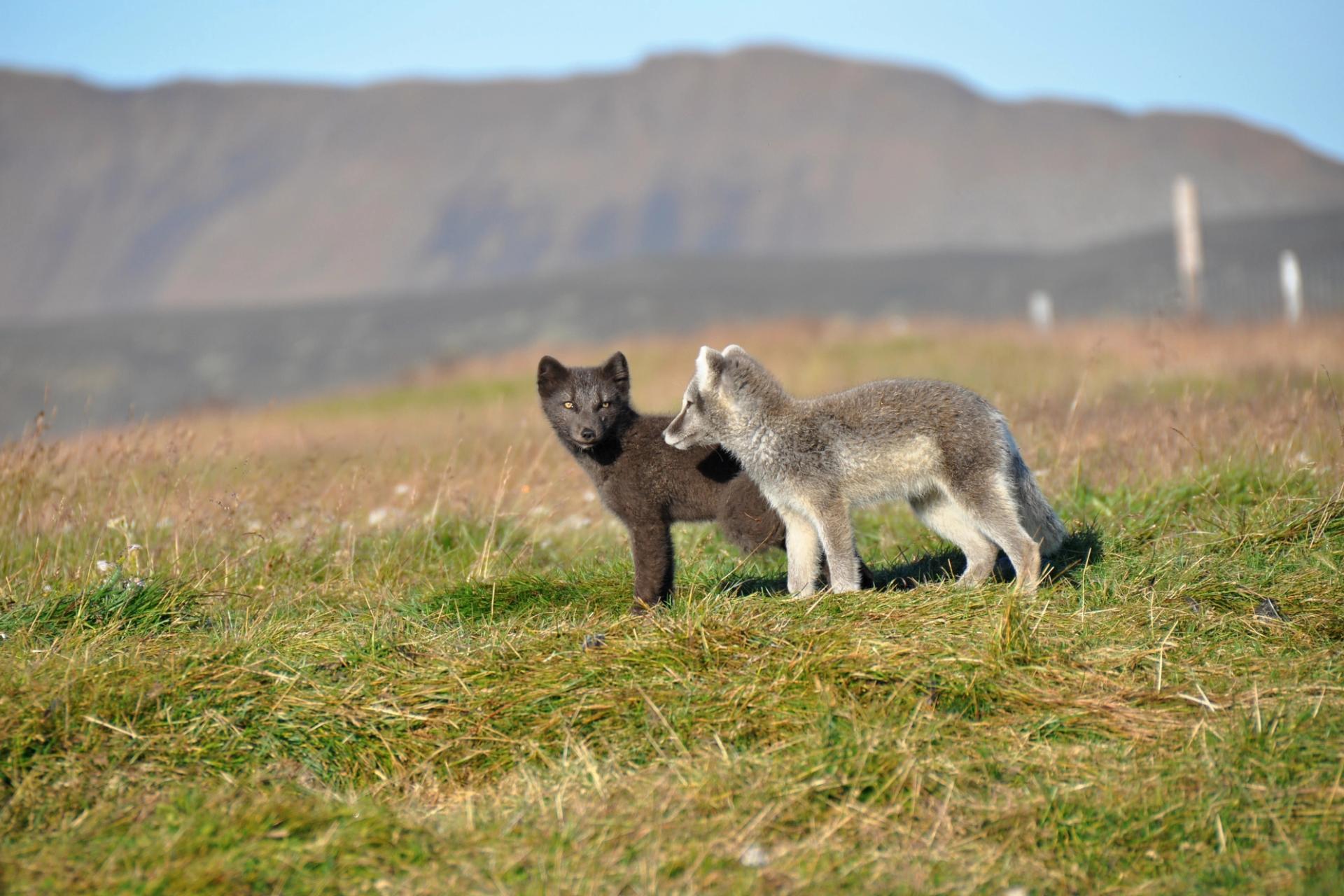 Waterfalls
WaterfallsGuide To Dynjandi Waterfall in Iceland
The Westfjords are located in Iceland’s remote lands and the area has so much untouched beauty! This includes the infamous Jewel of the Westfjords, also known as Dynjandi Waterfall, the largest waterfall in this region. We are going to tell you where it is located and how you can visit Dynjandi in Iceland.
Location and accessibility
Dynjandi Waterfall, located in the Arnarfjörður fjord, is approximately 386 kilometers from the capital city, Reykjavik. The scenic drive takes about 5 hours and will bring you through on Ring Road for half of it until you continue to head north
This majestic waterfall can be accessed by a gravel road, F-roads, generally suitable for all rental cars during the summer months. However, during winters, it is recommended to have a 4x4 vehicle.
Preparation for the visit
Best time to visit
The best time to visit Dynjandi is during the summer months when the road is most accessible, and the midnight sun provides 24 hours of daylight.
Safety guidelines
Stay on the marked paths, respect the fragile vegetation, and don't climb on the cliffs around the waterfall. Also, due to the remote location, ensure to inform someone about your travel plans.
What to bring?
Be sure to pack your hiking boots and a rain jacket when heading to Dynjandi Waterfall. The area can be slippery due to the waterfall mist.
Even on the nicest days, it can still be chilly in the area thanks to the wind.
If you are able to visit in winter, bundle up! Wear a heavy winter coat and good traction on your shoes. The ice combined with the waterfall mist can make dangerous terrain.
Don’t forget to bring your camera with you, you won’t want to pass up an opportunity to photograph the Jewel of the Westfjords.

The History Of Dynjandi Waterfall
This historic waterfall has been around since Iceland was formed. The area was created by the country's heavy volcanic activity. The cooling lava helped shape the majestic waterfall.
The first known sighting of the Dynjandi was said to be by an Icelandic bishop named Guðmundur Guðmundsson in the 17th century. He commonly described it in his writings.
Later, it was used for power mills and machinery for the people of the area. It was also a great source of water for the locals of the Westfjords.
In 1981 Dynjandi was deemed a National Monument. This meant there were rules set in place so the land could be cared for. This is how the hiking trail was created. If you are hiking the waterfall, be sure to stay on the trail and not damage any of its surroundings.
Since then, the waterfall has gained popularity and attracts tourists from all over the world.
Dynjandi Waterfall’s Ravishing Features
Dynjandi is one of the largest Iceland waterfalls in the Westfjords, so it is no wonder why there are so many sightseers coming here!
The total height of the Dynjandi waterfall is about 328 feet or 100 meters. The width resembles a bridal veil. This is all thanks to the small width of the top of the waterfall which is 98 feet, that fans out and widens to 196 feet, where it cascades into a pool at the bottom.
What does Dynjandi Mean?
The name "Dynjandi" translates to "Thunderous," which is fitting. You will be able to hear the falls cascading into the pool, creating a loud thunder of its own.
Is the road to Dynjandi paved?
Dynjandi Waterfall sits on Road 60, which is between Patreksfjordur and Isafjordur, While most of the road is paved, there is a section in the Westfjords that is not paved.

In the summer the road is safe to travel, however, we do recommend renting a 4X4 vehicle. This will help you navigate the rough terrain better, thanks to the traction of a 4X4 on rough terrain.
A 4x4 vehicle is essential when traveling to any portion of the Westfjords, due to the area's mountainous terrain.
Exploring around Dynjandi Waterfall
Trekking around Dynjandi
The area surrounding Dynjandi offers a number of trekking routes. With each step, the hiker is embraced by the ethereal beauty of the Icelandic wilderness.
Photographing Dynjandi
Owing to its immense beauty, Dynjandi is a paradise for photographers. Whether it's the break of dawn or the crimson hues of sunset, every moment here calls for a click.
Wildlife and flora
Being in an isolated region, Dynjandi also hosts a variety of wildlife and unique plant species. It’s not uncommon to spot the Arctic fox or puffins if you’re lucky.

Conclusion
Visiting Dynjandi Waterfall in Iceland is truly an experience of a lifetime. It's not just a sight to behold, but a symphony of nature that engages all your senses. Whether you're an adventurer, a nature lover, or a photography enthusiast, Dynjandi has something to offer for everyone. Make sure to plan your visit well, respect the guidelines, and lose yourself in the grandeur that is Dynjandi.
Frequently Asked Questions
Can I camp near Dynjandi Waterfall?
Yes, there's a camping area near Dynjandi Waterfall which offers basic facilities for overnight stays.
Is there an entrance fee to visit Dynjandi?
No, there is no entrance fee to visit Dynjandi. It's freely accessible to all.
How much time should I plan for a visit to Dynjandi?
You should plan around 2-3 hours for a visit to Dynjandi. This includes time to hike up to the main waterfall and enjoy the smaller cascades on the way.
Are pets allowed near the waterfall?
No, pets are not typically allowed near the waterfall to protect the local fauna and flora.
Dynjandi accessible during the winter months?
Accessibility during winter depends on weather conditions. It is advisable to check the road conditions before planning your visit.
Latest Blog Posts
 Guides
GuidesThe 2022 Eruption of Fagradalsfjall Volcano - An Unforgettable Iceland Volcano Eruption
Iceland has become a top destination for mind-blowing mountain hikes, volcanic hot springs, and icy glaciers. Adventurers flock to the land of fire and ice to experience these thrilling opportunities! So it is no wonder why Iceland's volcanic eruptions attract visitors from all over the world!
 Waterfalls
WaterfallsGuide to Svartifoss Waterfall in Iceland
Svartifoss, or the 'Black Waterfall', is an exquisite natural wonder tucked away in the Vatnajökull National Park of Iceland. Known for its distinctive basalt columns and cascading water, this waterfall is a must-see for nature lovers and travelers.
 Itineraries
ItinerariesTop 11 Must-Visit Volcanic Sites in Iceland
Iceland has over 130 volcanoes located throughout the country, with 30 of them still active today. Some of them are famous for recent volcanic eruptions, while others have not erupted in thousands of years. There are so many notable Iceland volcanoes, it is hard to know which ones you can visit. With the nickname of The Land of Fire and Ice, you know you won’t be disappointed when it comes to Iceland's volcanic sites. Here are our top 11 must-visit volcanic sites in Iceland!